what is a kelly hose brands

Flexible drilling rubber hoses play an important role in petroleum extraction. They should suffer high operating pressure, extreme operating temperature, abrasion and other inferior elements. Our special compounded synthetic rubber has been proven an effective and economical way to reject these problems. All our oilfield drill hoses are manufactured as API 7K or other related specifications.
Steel cable reinforcement loads most working pressure up to 15,000psi. The wires are usually zinc-plating or copper platting to improve steel wire resistant against rust and corrosion. Due to the thick reinforcement, the hoses should be handled or stored in correct way to avoid kicking or crushing. They will substantially decrease their rated operating pressure.
Rotary hose, Kelly hose, cement hose, mud hose, jumper hose and vibrator hose and choke & kill hoses are the most popular oilfield rubber hoses. They convey high-pressure drilling fluid from one place to another. Many end fittings are provided to satisfy different applications. Most end fittings are made according to API standards. Special order is also available.
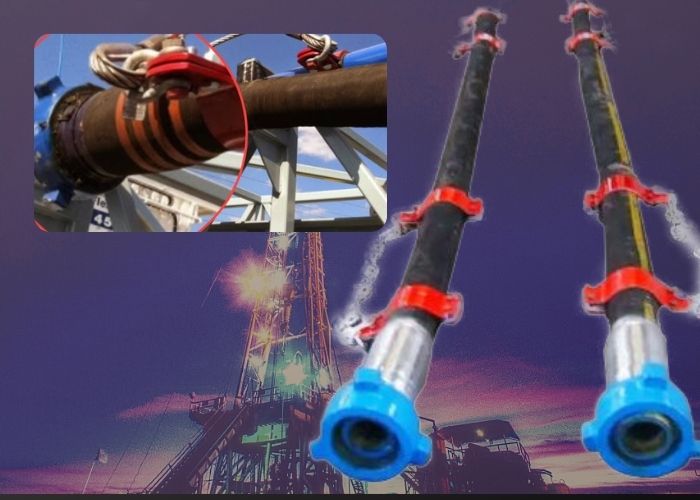
Kelly hose is used to connect the standpipe to the swivel. It allows the drill string to be raised and lowered while the drill fluid is pumped through it. Kelly line usually contains two layers of plated steel cables to reach 5000 psi operating pressure. Inside tube is made of special NBR to improve abrasion and corrosion capability. Rubber cover is compatible with the ozone, sunlight and oils for a long time. It is supplied with multiple end fittings – API flanges, threads, butt-welded union and other as specified.
Our professional sales representatives will provide you the suggestions of mining screen and applications. Just tell us your requirements and your problems, we will help you solve them.

additional terms may apply. By using this site, you agree to the Terms of Use and Privacy Policy. Wikipedia® is a registered trademark of the Wikimedia Foundation, Inc., a non-profit organization.

CountryUnited StatesAfghanistanAlbaniaAlgeriaAndorraAngolaAnguillaAntarcticaAntigua and BarbudaArgentina RepublicArmeniaArubaAustraliaAustriaAzerbaijanBahamasBahrainBangladeshBarbadosBelarusBelgiumBelizeBeninBermudaBhutanBotswanaBouvet IslandBoliviaBosnia and HerzegovinaBrazilBritish Indian Ocean TerritoryBritish Virgin IslandsBrunei DarussalamBulgariaBurkina FasoBurundiCambodiaCroatiaCameroonCanadaCape VerdeCayman IslandsCentral African RepublicChileChinaChristmas IslandsCocos IslandsColombiaComorosCongoCook IslandsCosta RicaCote D"IvoireCyprusCubaCzech RepublicDenmarkDjiboutiDominicaDominican RepublicEast TimorEcuadorEgyptEl SalvadorEstoniaEquatorial GuineaEthiopiaFalkland IslandsFaroe IslandsFijiFinlandFranceFrench GuianaFrench PolynesiaFrench Southern TerritoriesGabonGambiaGeorgiaGermanyGhanaGibraltarGreeceGreenlandGrenadaGuadeloupeGuamGuatemalaGuineaGuinea-BissauGuyanaHaitiHeard and McDonald IslandsHondurasHong KongHungaryIcelandIndiaIraqIndonesiaIranIrelandIsraelItalyJamaicaJapanJordanKazakhstanKenyaKiribatiKorea (North)Korea (South)KuwaitKyrgyzstanLaoLatviaLebanonLesothoLiberiaLibyan Arab JamahiriyaLiechtensteinLithuaniaLuxembourgMacauMacedoniaMadagascarMalawiMalaysiaMaldivesMaliMaltaMarshall IslandsMartiniqueMauritaniaMauritiusMayotteMexicoMongoliaMontenegroMontserratMoroccoMozambiqueMicronesiaMonacoMyanmarNamibiaNauruNepalNetherlands AntillesThe NetherlandsNew CaledoniaNew ZealandNicaraguaNigerNigeriaNiueNorfolk IslandNorthern Mariana IslandsNorwayOmanPanamaPakistanPalauPalestinePapua New GuineaParaguayPeruPhilippinesPitcairnPolandPortugalPuerto RicoQatarRomaniaRussian FederationRwandaSamoaSan MarinoSao Tome and PrincipeSaudi ArabiaSenegalSerbiaSeychellesSierra LeoneSingaporeSlovakiaSloveniaSolomon IslandsSomaliaSouth AfricaSpainSri LankaSt. HelenaSt. Kitts and NevisSt. LuciaSt. Pierre and MiquelonSt. Vincent and the GrenadinesSudanSurinameSvalbard and Jan MayenSwazilandSwedenSwitzerlandSyrian Arab RepublicTaiwanTajikistanTanzaniaThailandTogoTokelauTongaTrinidad and TobagoTunisiaTurkeyTurkmenistanTuvaluUgandaUkraineUnited Arab EmiratesUnited KingdomU.S. Minor Outlying IslandsUruguayUzbekistanVanuatuVenezuelaVietnamVirgin Islands (USA)Vatican City StateWallis and Futuna IslandsWestern SaharaYemenYugoslaviaZambiaZimbabwe
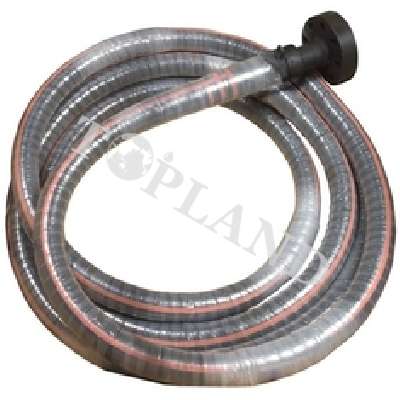
A rotary/pumper hose is used in oil well drilling. It acts as the crucial instrument in the connection being made between the standpipe and the swivel.
A rotary hose is also used as a means of permitting the kelly to be either raised or lowered through the drilling process while also allowing the drill bit to be raised with the drillstring. For this reason, it is also often referred to as a “kelly hose.”
Rotary hoses also function during the process that allows the drilling fluid to be pumped through the hose when the bit and drillstring are raised and lowered.
This process is imperative in the completion of the drilling process. The drillstring portion of the drilling line and the connection to the rotary hose is thus crucial.
A large-diameter (3- to 5-in inside diameter), high-pressure flexible line used to connect the standpipe to the swivel. This flexible piping arrangement permits the kelly (and, in turn, the drillstring and bit) to be raised or lowered while drilling fluid is pumped through the drillstring. The simultaneous lowering of the drillstring while pumping fluid is critical to the drilling operation.
Made of heavy rubber and steel cables the hose is basicly flexible piping that allows the Kelly and the bit and drill string to be raised and lowered while the drilling fluid is pumped through drill string.
lowering the drill string and pumping drilling mud is very important to the drilling process and when these hoses go down or fail in service a entire rig can shut down.
Made of heavy rubber and steel cables the hose is basicly flexible piping that allows the Kelly and the bit and drill string to be raised and lowered while the drilling fluid is pumped through drill string.
Rotary Drilling/Pumper hose is mainly used for conveying water-based or oil-based mud and other fluids in the working temperature of -30 °C to +82 °C.
The reinforcement is made from 2-8 layers of high tensile and high strength spiraled steel wire, making the hose have solid structure and resistant to high pressure.
The cover is made from high quality synthetic rubber, mainly chloroprene rubber, making the hose resistant to abrasion, corrosion, cut, weather, ozone, aging and sunlight.
A Kelly hose (also known as a mud hose or rotary hose) is a flexible, steel reinforced, high pressure hose that connects the standpipe to the kelly (or more specifically to the goose-neck on the swivel above the kelly) and allows free vertical movement of the kelly while facilitating the flow of drilling fluid through the system and down the drill string.
Flexible drilling rubber hoses play an important role in petroleum extraction. They should suffer high operating pressure, extreme operating temperature, abrasion and other inferior elements. Our special compounded synthetic rubber has been proven an effective and economical way to reject these problems. All our oilfield drill hoses are manufactured as API 7K or other related specifications.
Steel cable reinforcement loads most working pressure up to 15,000psi. The wires are usually zinc-plating or copper platting to improve steel wire resistant against rust and corrosion. Due to the thick reinforcement, the hoses should be handled or stored in correct way to avoid kicking or crushing. They will substantially decrease their rated operating pressure.
We are global leader in the design, manufacture and supply of high pressure hoses.As drilling operation methods evolve, become deeper, with increasing pressure and higher temperatures,
We have over 50 years of experience in metallic reinforced bonded elastomer hoses and has been the first company to obtain certification for all three governing industry standards: API 7K, 16C and 17K standard.
We have since built up a broad portfolio for a variety of drilling applications, such as flexible choke & kill Lines, rotary & vibrator hoses, managed pressure drilling hoses to meet the needs of both onshore & offshore drillers and distributors.
Our key offering includes rotary drilling / vibrator hose grade D and E, choke and kill, cement and sour hoses. The supports the pumping of mud at very high pressure during drilling and exploration campaigns.
Protects the polymer lining from mechanical damage, prevents blistering in case of high pressure gas service and decompression with vacuum service, supports the wall of the flexible hose.
The lining material is selected to withstand chemical and heat effects of drilling mud, well effluents, cement slurry, hydraulic fluid or whatever substance is conveyed through the hose.
These are the most important load-bearing elements, they determine internal pressure resistance. The cables are either zinc or brass coated to provide exceptional corrosion resistance.
High-pressure mud hose also called rotary hose, vibrator hose or jumper hose, is used to convey drilling fluid from mud pump to the mud standpipe manifold on the drill floor.
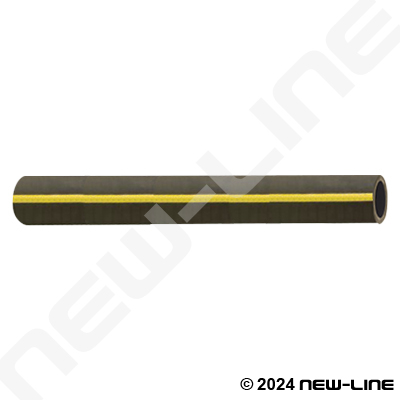
This website is using a security service to protect itself from online attacks. The action you just performed triggered the security solution. There are several actions that could trigger this block including submitting a certain word or phrase, a SQL command or malformed data.

A large-diameter (3- to 5-in inside diameter), high-pressure flexible line used to connect the standpipe to the swivel. This flexible piping arrangement permits the kelly (and, in turn, the drillstring and bit) to be raised or lowered while drilling fluid is pumped through the drillstring. The simultaneous lowering of the drillstring while pumping fluid is critical to the drilling operation.
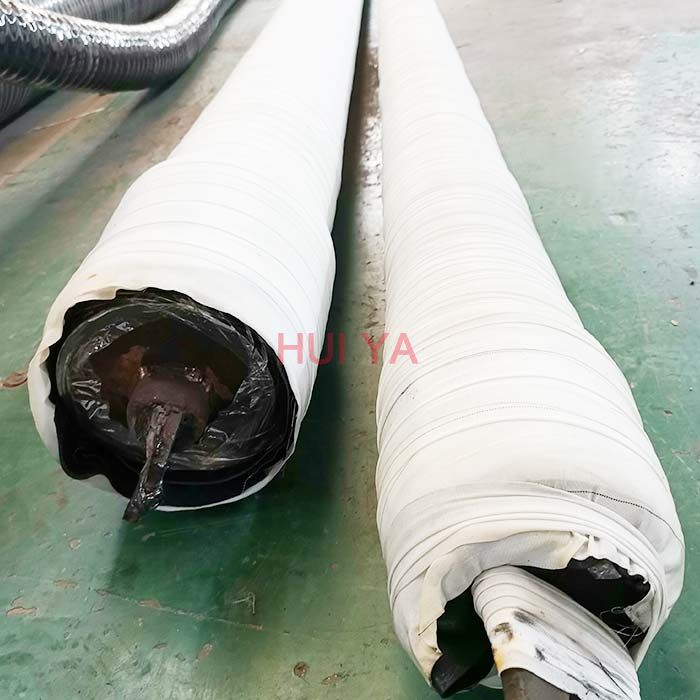
From 2003, Letone has always been committed to manufacturing rubber hose for 14 years, which provides high-grade and high-end rubber hose for the field of spaceflight and maritime industry, petroleum industry and highway, and PLA etc. Just as careful and elaborate rubber hose, LETONE has now become a high-tech enterprise integrating research, production, sales and services after years of steady development, shining brilliantly in the international market as an iconic enterprise among China"s rubber hose.
By 2016, Letone has built 4 world-class manufacture bases which cover a total area of over 80,000 m2, and accomplished an annual production value of RMB 5 billion.
To offer you more timely service and solve your puzzles during operation of production lines, we push out the strategy of "Globalization & Localization". Currently, we have set 4 overseas offices distributed over different continents. If there is any need, we can "knock your door" at once. It is a strategy just right for you.
Service is the soul of a brand. So, LETONE integrates service into each segment of the life cycle of every order from pre-sale, in-sale until after-sale, and offers "consultancy" and "manager" service.

High Pressure Drilling Rotary Hoses is used in drilling and exploration work. Suitable for hydraulic fluids, such as hydraulic oil, fuel oil, lubricants, emulsion, glycol and water.Drilling hose is also used to adjust the installation mistake between drilling pipe line and stand pipe to avoid shake. To transmit high pressure oil or water based mud.
Meets the severe demands of today’s drilling methods including directional drilling, pressure pulses and elevated temperatures. Tube is designed to handle abrasive, corrosive and oil based drilling muds. The cover is designed to handle external damage from abrasion, corrosion, gouges, oil and weather.
Recommended For:Flexible hose between the riser and manifold or around the ball joint of offshore drilling rigs, specially designed to withstand high pressure.Meets the high demands of directional drilling and down linking with negative pressure pulses and elevated temperatures. This hose can also be used as a Motion Compensator hose for stabilization of rotary drilling and pumping equipment against vertical wave action on offshore drill platforms. The Motion Compensator hose is not recommended for phosphate ester fluids.
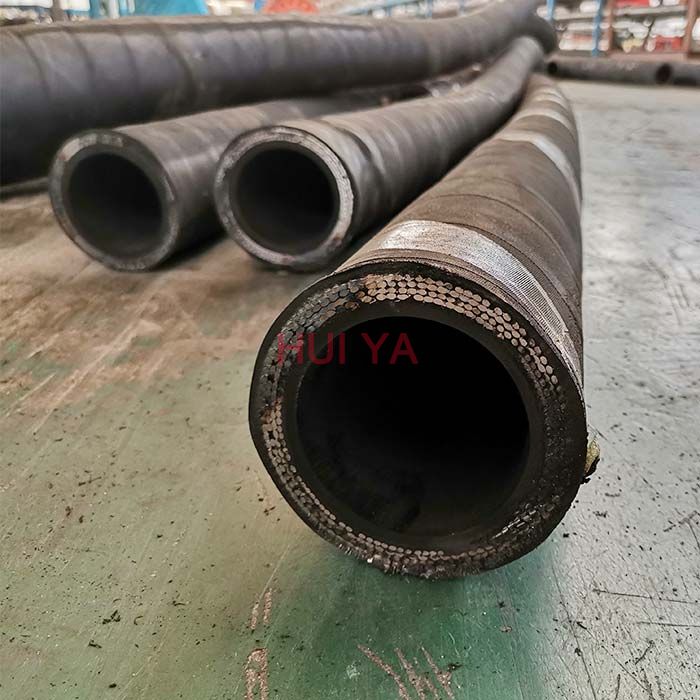
Your car or truck’s radiator hoses, which connect the engine to the radiator, are important components that maintain consistent internal engine temperatures. The upper hose connects to the top of the engine, while the lower hose connects to the bottom. Coolant flows through the engine to cool internal temperatures and works with the hoses. Radiator hoses carry hot coolant away from the engine and into the radiator, a large tank with small channels where the coolant flows to dissipate heat. Radiator fans, which are located behind the radiator, help cool the antifreeze or coolant once it enters. The radiator hoses also carry the coolant back into the engine to absorb the heat created during the combustion process. Once the engine reaches operating temperatures, the hot coolant cycles back to the radiator where it is cooled again. Because the engine can reach extreme temperatures, the coolant is often extremely hot. Over time, hot coolant can cause radiator hoses to deteriorate from the inside out.
Replacing your radiator hoses is one way to minimize the chance of engine failure and breakdowns. A visual inspection of your hoses can help you determine the proper time to replace them. Cracks, bulges, and hardened hoses are all signs that your radiator hoses are nearing the end of their useful life. Poor heating system performance also indicates a problem with your hoses. Heat, vibrations, and corrosion are all contributing factors to bad radiator hoses. A coolant leak in either green, red, or yellow liquid is another warning sign of a cracked or corroded radiator hose that should be replaced. Bad hoses can cause serious engine damage through an overheating engine or catastrophic failure. At the first sign of a bad radiator hose, be sure to contact our service staff to have your radiator hose replaced.

Heater hoses play a crucial role in a vehicle’s heating system, which operates in conjunction with the cooling system. Running engines produce a tremendous amount of heat that will need to be transferred away from the engine in order to prevent overheating and subsequent breakdowns. Heater hoses are responsible for carrying coolant to prevent overheating. Coolant or antifreeze flows through the engine, absorbs the excess heat, and carries the heat away from the engine. More specifically, heater hoses are responsible for transferring coolant away from the engine to the heater core, where the warm air can be blown inside the compartment of your vehicle by engaging the adjacent fan. Heater fans blow through the heater core to heat the vehicle and cool the antifreeze inside of it. The hoses transfer the coolant back into the path of the cooling system at a lower temperature so the coolant can continue to regulate consistent temperatures inside the engine.
Made of durable rubber, heater hoses are built to sustain the hot coolant that is carried from the engine to the heater core. Poor climate control is a sign of problems with your vehicle’s hoses. When your heater hoses near the end of their useful life, they will become hard and brittle or soft and mushy. If they crack, the coolant will leak and pool underneath your vehicle. When this happens, allow a member of our service staff to replace your heater hoses. A leaky hose means your heating system will not effectively heat your vehicle, and your cooling system will not have a proper supply of coolant. Leaky heater hoses can result in your engine overheating. As such, we encourage you to periodically inspect your heater hoses to determine the correct time to replace them.




 8613371530291
8613371530291